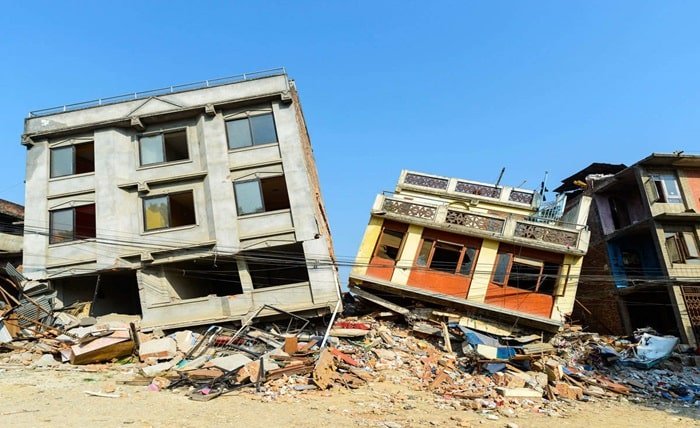Earthquake in Delhi: The Risks, Impacts, and Preparedness for the Capital City

Delhi, the bustling capital of India, is a city that epitomizes culture, history, and rapid urban growth. However, beneath this vibrant facade lies a potential threat that has caused concern for decades: earthquakes. Located in a seismically active region, Delhi is susceptible to significant seismic activity, making earthquake preparedness crucial for its millions of residents. This blog post will delve into the causes of earthquakes in Delhi, the historical impact of seismic events, risk factors, safety measures, and essential steps for preparedness. Understanding the earthquake risk in Delhi is key to mitigating damage and ensuring the safety of its people.
Earthquakes: What Causes Seismic Activity in Delhi?
Earthquakes occur due to the sudden release of energy in the Earth’s crust, creating seismic waves. Delhi is situated in the northern part of India, close to the Himalayan tectonic plate boundaries, making it vulnerable to earthquakes. The Indian plate’s collision with the Eurasian plate, which led to the formation of the Himalayas, continues to generate significant seismic activity in this region. Delhi falls under Seismic Zone IV, which is categorized as a high-risk area.
The primary geological faults near Delhi, such as the Delhi-Haridwar Ridge and the Sohna Fault, contribute to the seismic risks. The region’s close proximity to these fault lines means that even moderate earthquakes can cause severe damage due to the dense population and urban infrastructure. Understanding these geological dynamics is the first step in assessing and preparing for earthquake risks in Delhi.
Historical Earthquakes in Delhi: Key Events and Their Impact
Delhi has experienced several earthquakes over the centuries, some of which have caused considerable damage. While most earthquakes in Delhi have been of moderate intensity, they serve as a stark reminder of the region’s vulnerability. Notable historical earthquakes include:
- 1803 Delhi Earthquake: One of the earliest recorded earthquakes in the region, the 1803 earthquake had an estimated magnitude of 6.0 and caused significant damage to structures in Delhi and surrounding areas.
- 1960 Delhi Earthquake: With a magnitude of 6.0, this earthquake shook Delhi, causing panic among residents. Although the damage was moderate, it highlighted the city’s seismic vulnerability.
- 2015 Nepal Earthquake Tremors: The powerful 7.8 magnitude earthquake that struck Nepal sent shockwaves to Delhi, rattling buildings and causing widespread fear. Although the epicenter was far away, the tremors were strongly felt in Delhi, illustrating the far-reaching impact of seismic events.
These historical incidents underline the need for robust preparedness and infrastructure capable of withstanding seismic shocks.
Earthquake Risk Factors in Delhi: Why the City is Vulnerable
Several factors contribute to Delhi’s vulnerability to earthquakes. Understanding these risks can help in planning and implementing effective safety measures:
- High Population Density: With over 20 million residents, Delhi is one of the most densely populated cities in the world. This high density means that a large number of people are at risk during an earthquake, particularly in densely packed neighborhoods with old and poorly constructed buildings.
- Unregulated Urban Growth: Rapid urbanization and unregulated construction practices have led to the proliferation of buildings that do not adhere to seismic safety standards. Many structures in Delhi are not designed to withstand strong earthquakes, increasing the risk of collapse.
- Proximity to Fault Lines: As mentioned, Delhi is near several active fault lines, making it prone to seismic activity. Even minor movements along these faults can trigger significant tremors in the city.
- Aging Infrastructure: Many of Delhi’s buildings, bridges, and flyovers were constructed decades ago without considering modern seismic standards. This aging infrastructure is particularly vulnerable to damage during an earthquake.
Addressing these risk factors is critical for reducing the city’s earthquake vulnerability and enhancing public safety.
The Impact of Earthquakes on Delhi’s Infrastructure
Earthquakes can have devastating impacts on a city’s infrastructure, leading to widespread damage and disruption. In Delhi, the primary concerns include:
- Building Collapses: Non-compliant buildings, especially in older parts of the city, are at high risk of collapse during earthquakes. This can lead to significant casualties and injuries.
- Road and Bridge Damage: Earthquakes can severely damage roads, bridges, and flyovers, disrupting transportation and emergency response efforts. Delhi’s complex road network is particularly vulnerable, as even minor tremors can cause cracks and structural weaknesses.
- Utility Failures: Earthquakes can damage critical utilities such as electricity, water supply, and gas lines, compounding the challenges of disaster response. Power outages and water supply disruptions are common secondary effects of seismic activity.
- Communication Breakdown: Earthquakes can disrupt communication networks, making it difficult for emergency services to coordinate response efforts and for people to contact loved ones.
These impacts underscore the importance of resilient infrastructure that can withstand seismic shocks, ensuring the city can recover quickly from such events.
Earthquake Preparedness: Essential Steps for Delhi Residents
Preparation is key to minimizing the impact of earthquakes. Here are essential steps Delhi residents can take to stay prepared:
- Create an Emergency Plan: Families should have a clear emergency plan that includes evacuation routes, meeting points, and emergency contact information. Practice earthquake drills regularly to ensure everyone knows what to do when an earthquake strikes.
- Secure Your Home: Secure heavy furniture, appliances, and decorations to walls to prevent them from toppling during tremors. Ensure that your home’s structure meets seismic safety standards, and consider retrofitting if necessary.
- Assemble an Emergency Kit: Keep an emergency kit with essentials such as water, non-perishable food, a flashlight, first-aid supplies, and important documents. This kit should be easily accessible in the event of an earthquake.
- Stay Informed: Stay updated on earthquake alerts and information from reliable sources such as the Indian Meteorological Department (IMD). Knowing when and where an earthquake is likely to occur can help you take timely precautions.
- Learn First Aid: Basic first aid skills can be lifesaving during an earthquake. Knowing how to treat minor injuries and perform CPR can make a significant difference while waiting for professional medical assistance.
Government Initiatives and Earthquake Preparedness in Delhi
The government of Delhi, along with national agencies, has taken several steps to enhance earthquake preparedness and reduce risks. Key initiatives include:
- Seismic Zoning and Building Codes: The Bureau of Indian Standards (BIS) has developed seismic zoning maps and building codes that specify construction standards to withstand earthquakes. Compliance with these codes is mandatory for new constructions in Delhi.
- Public Awareness Campaigns: The Delhi government regularly conducts public awareness campaigns to educate residents about earthquake safety and preparedness. These initiatives aim to inform the public about steps they can take to protect themselves and their families.
- Disaster Management Plans: The Delhi Disaster Management Authority (DDMA) has developed comprehensive disaster management plans that include earthquake response strategies. These plans outline the roles of various agencies in rescue and relief operations during an earthquake.
- Earthquake Drills: Regular earthquake drills are conducted in schools, offices, and residential areas to ensure that people know how to react during an earthquake. These drills are crucial for building a culture of preparedness.
While these efforts are commendable, there is still a need for continuous improvement and stricter enforcement of regulations to ensure Delhi is better prepared for future seismic events.
What to Do During and After an Earthquake in Delhi
Knowing how to respond during and after an earthquake can save lives. Here are key actions to take:
- During an Earthquake: If indoors, drop to the ground, take cover under a sturdy table or desk, and hold on until the shaking stops. Stay away from windows, glass, and heavy objects that could fall. If outdoors, move to an open area away from buildings, trees, and power lines.
- After an Earthquake: Check yourself and others for injuries and provide first aid if necessary. Avoid using elevators and be cautious of aftershocks. Inspect your home for damage and hazards such as gas leaks or electrical issues, and report any major structural damage to authorities.
- Communication: Use text messages or social media to communicate with family and friends, as phone lines may be congested. Follow instructions from emergency services and avoid spreading rumors.
- Evacuation: If instructed to evacuate, do so calmly and follow designated routes. Take your emergency kit and important documents with you.
Being prepared and knowing how to respond can significantly reduce the impact of an earthquake on you and your loved ones.
Conclusion
Earthquakes in Delhi are a reality that residents and authorities must contend with. The city’s geographical location, combined with high population density and aging infrastructure, makes it particularly susceptible to seismic activity. However, with the right preparedness measures, risk mitigation strategies, and public awareness, the impact of earthquakes can be significantly reduced. Delhi must continue to invest in resilient infrastructure, enforce building codes, and educate its citizens about earthquake safety to safeguard lives and property. Understanding the risks and taking proactive steps will help ensure that Delhi remains prepared for any seismic event.




